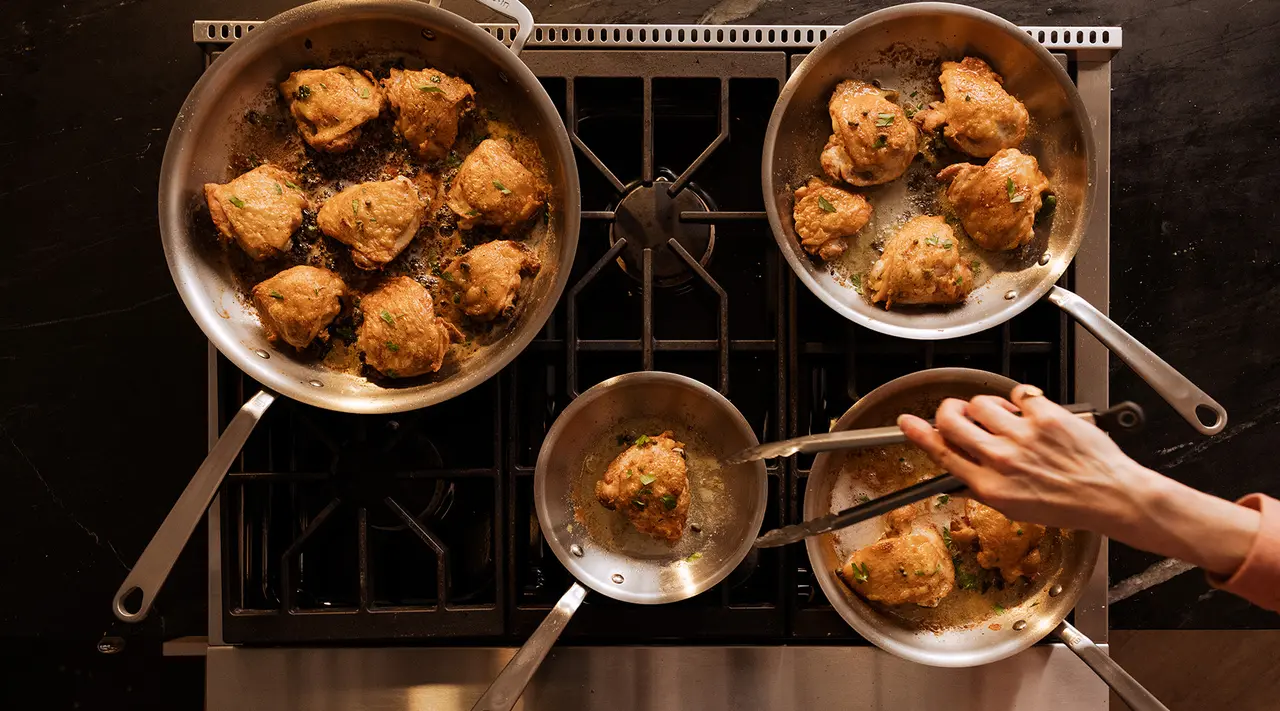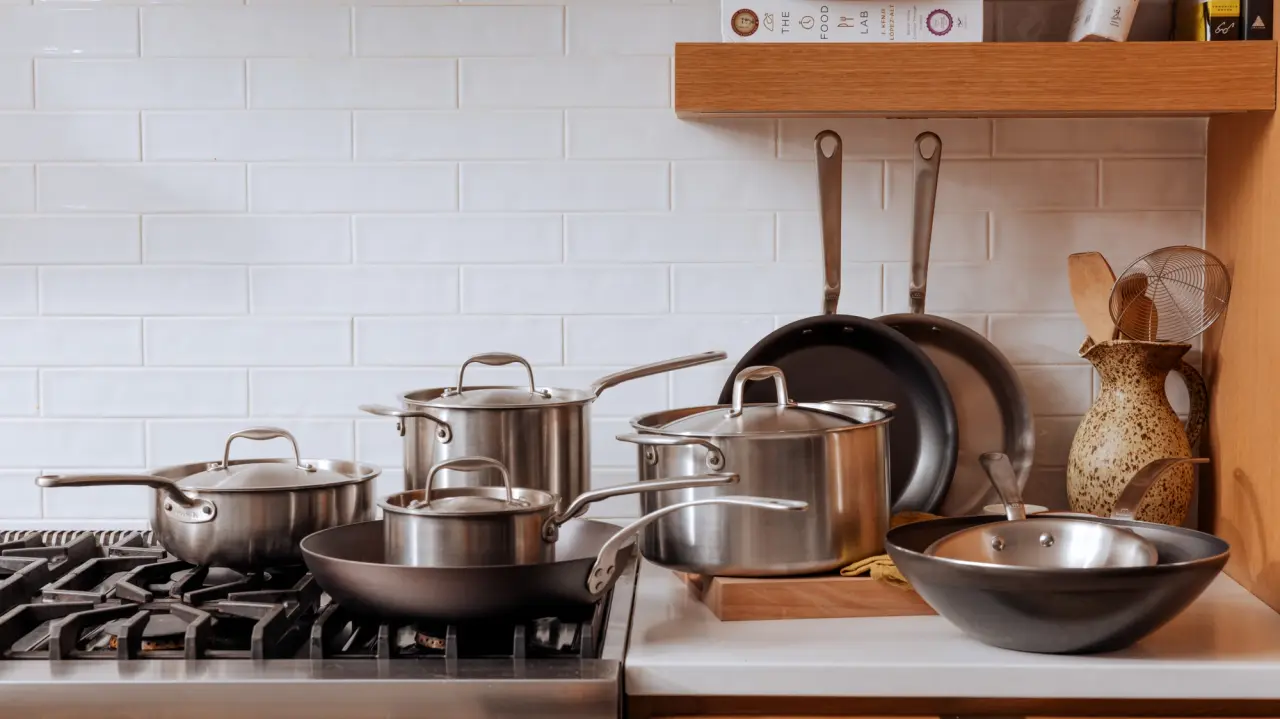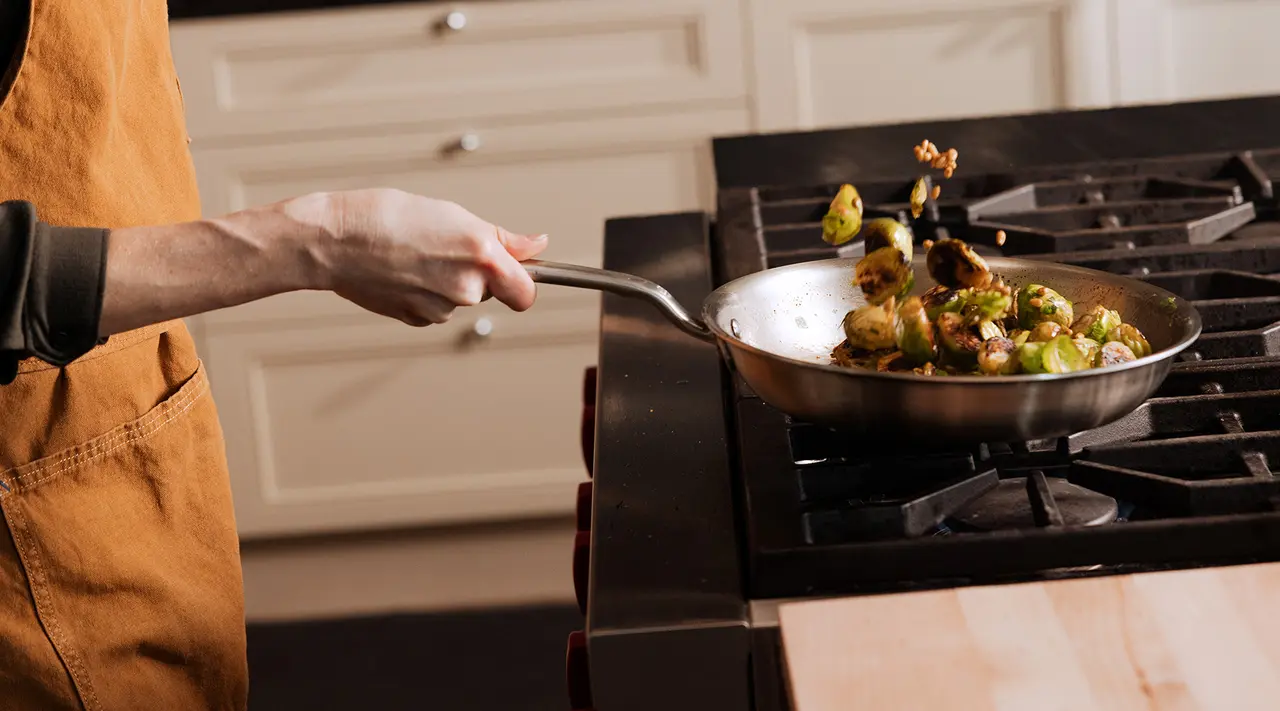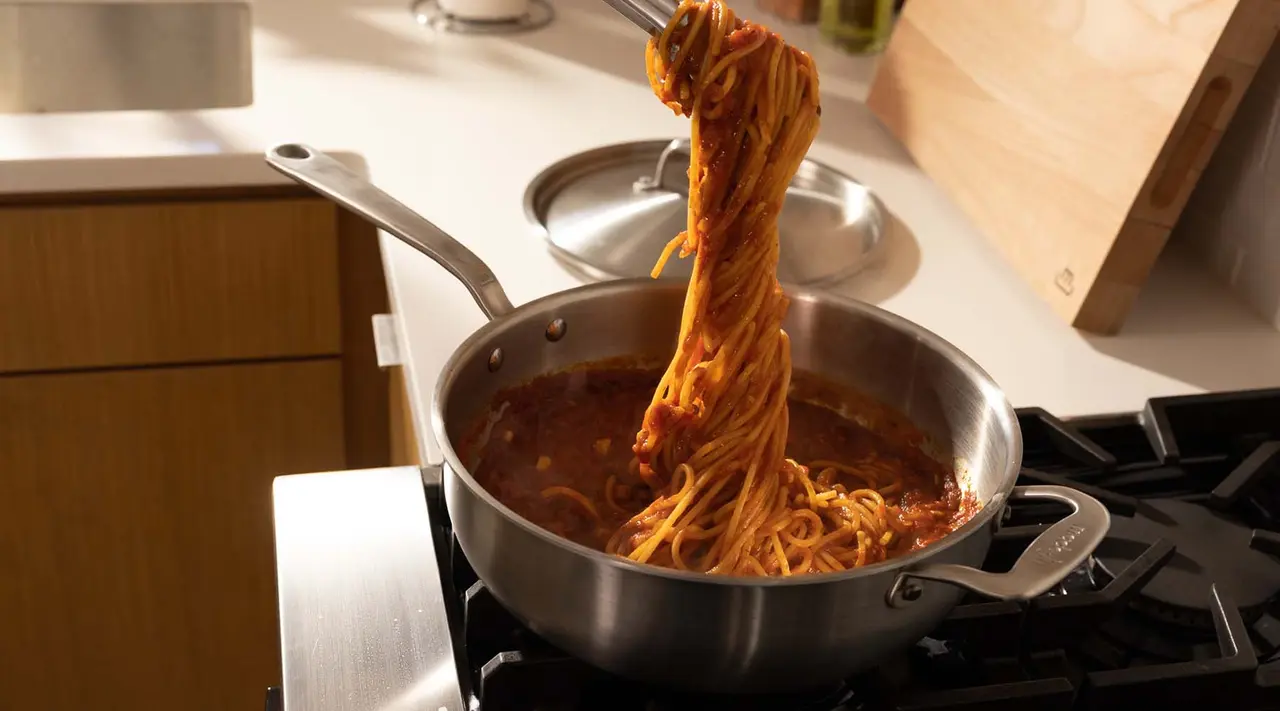Let’s say you’re making your favorite Sunday sauce recipe. You’ve browned the sausage and braciole, added your tomatoes, and left it to simmer for hours until your kitchen smells like your nonna’s. You go to try it, and it tastes, well, kind of weird, actually. But you followed the recipe to a T—where could you have gone wrong? Then you remember: your usual enameled Dutch oven was dirty, so you swapped it for a pot made of unfinished cast iron (a highly reactive cookware material) instead.
While unfortunate, this is an easily avoidable mistake. To help you avoid the same fate, we put together the following guide to nonreactive cookware: what it’s made of, why it matters, and when to actually use it.
What Is a Nonreactive Pan?

Before we jump into what a nonreactive pan is, let’s talk about what actually makes a piece of cookware reactive. Essentially, a reactive pan will undergo a chemical change whenever it interacts with certain substances—often highly acidic or alkaline ingredients, like citrus, vinegar, wine, or tomatoes—and might leech certain unwanted flavors or colors into your food.
So, a nonreactive pan is the opposite. Rather than changing the flavor or appearance of your food, non-reactive pans provide a neutral cooking surface, and play well with pretty much any ingredient you throw at them. You won’t have to worry about damaging the pan or imparting any weird flavors, even with long-cooked dishes. Some common nonreactive pans include stainless steel and enameled cast iron.
Why are Nonreactive Pans Important?
While you don’t always need to worry about having a nonreactive pan, there are some situations where it’s crucial. If you’re planning to make a slow-cooked, tomato-based dish like the aforementioned ragu, you’ll definitely want to reach for a nonreactive pan—ditto for anything containing citrus, vinegar, wine, or other alcohol.
While you won’t notice much of a difference in quick-cooking dishes, you may detect a slight tinny taste in a sauce or stew after it’s cooked for a while. It can also change your pan—if you make something using those ingredients in a carbon steel frying pan, you'll likely need to reseason your pan after cooking, as acid can strip even the toughest patina.
Common Reactive and Nonreactive Materials

Reactive cookware materials include:
- Carbon steel
- Unfinished cast iron
- Unlined copper
- Aluminum
While nonreactive materials include:
- Stainless steel
- Non stick
- Enameled cast iron
You probably have a mix of both in your kitchen, and it should be that way. There’s no reason to toss your nonreactive cookware, as they can still be used for dishes not involving acidic or alkaline ingredients. Even if you can’t make coq au vin in your carbon steel pan, you can still sear up an impeccable chicken breast—the same applies to unfinished cast iron.
Advantages of Cooking with Nonreactive Pans

While reactive cookware has its place in any home kitchen, we understand the urge to buy only nonreactive pots and pans for your new kitchen setup—especially if you’re only planning to invest in a few pieces, and don’t want to worry about possibly ruining your food.
If that’s your plan, you could do way worse than enameled cast iron or stainless steel options: perfect for searing, slow-cooking, and everything in between, our Stainless Clad and Enameled Cast Iron pots and pans are both excellent, versatile options. Conveniently, our Non Stick Pans are also nonreactive, thanks to their Stainless Clad body.
Ready to Shop?
Nonreactive cookware isn’t inherently better or safer than reactive cookware. As long as you know how to use it properly (and are aware of the potential risks) reactive cookware can be a regular part of your cookware rotation—just do yourself a favor and reach for Stainless Clad or Enameled Cast Iron for your Sunday gravy, instead.






























